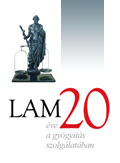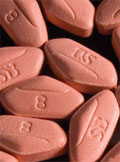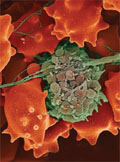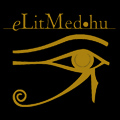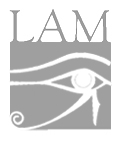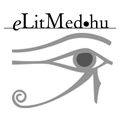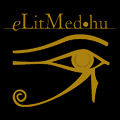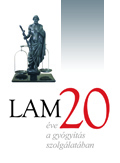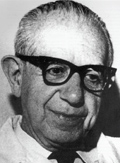The eLitMed.hu medical portal uses computer cookies for convenient operation. Detailed information can be found in the Cookie-policy.
Lege Artis Medicinae - 2010;20(12)
Content
[Farewell to rosiglitazone: where to go?]
[The European Medicines Agency concluded that the marketing authorisation for all rosiglitazonecontaining medicines (Avandia, Avandamet, Avaglim) should be suspended across the European Union. The National Health Insurance Fund Administration in Hungary in a circular letter called the attention of GP’s to the necessity in getting the medical proposal (of an internist, endocrinologist or diabetologist) for substituting rosiglitazone to arrange a smooth modification of their treatment regimen. The review taking into account updated recommendations of the ADA-EASD and the Hungarian Diabetes Association summarises the potential drugs. The first line therapy of choice has to be starting with insulin. Pioglitazone might also be administered, with all known side effects of the glitazone family, e.g. congestive heart failure and bone fractures. Further alternatives are choosing the newer drugs of the incretin principle: the incretin mimetics (exenatid, liraglutid) and the incretin enhancers (sitagliptin, vildagliptin, saxagliptin). Beside their favourable profile of effect they do not have longterm follow up outcome studies and evidences for cardiovascular safety.]
[On rivaroxaban’s mechanism of effect]
[A new era of anticoagulant therapy is approaching. No new oral anticoagulants have been introduced for seventy years. However, two large groups of anticoagulants (molecules with anti-FXa and anti-FIIa acitivity) are currently at advanced stages of clinical trials. This publication summarises the most important information on the mechanism of effect of the anti-FXa drug rivaroxaban. The possible advantages of the “direct” effect and the anti-FXa effect are emphasized. The most significant drug interactions of the new anticoagulant are also presented.]
[Pancreatology in practice: acute pancreatitis]
[Acute pancreatitis requires various diagnostic and treatment procedures. The clinical picture of acute pancreatitis is diverse, ranging from mild abdominal pain or dyspepsia to severe, lifethreatening multiorgan failure or sepsis. Most cases of pancreatitis result in a mild/edematous inflammation of the pancreas, whereas the remaining 15-20 percent results in severe necrotising pancreatitis with a mortality rate as high as 10-30 percent, although imaging diagnostics, operative endoscopy and intensive internal and surgical therapy have improved significantly in the past few years. Quick and accurate diagnosis of the disease is required for early therapeutic intervention. For example, we know that in cases of biliary acute pancreatitis an early (within 24-48 hours following the onset of symptoms) endoscopic sphincterotomy and stone extraction significantly improve the prognosis of the disaese. It is also important to introduce an adequate perfusion/rehydration therapy and a simultaneous enteral feeding introduced as soon as possible to avoid the superinfection of the pancreatic necrosis. Therefore, when reviewing the epidemiological characteristics, pathophysiology, up-to-date diagnostic and therapeutic approaches of the disease, we emphasise early interventions. We also highlight the importance of patient care and follow-up checks after an incident of acute pancreatitis.]
[The up-to-date approach of Parkinson’s disease]
[Parkinson’s disease is the second most frequent neurodegenerative disease. Its aetiology has not been clarified yet, but genetical as well as environmental factors might have a significant role in its development. The differentiation between Parkinsonian syndromes and Parkinson’s disease (idiopathic Parkinsonian syndrome) could be very difficult even today. The accuracy of the diagnosis is no more than 90% despite the expertise of the best-trained neurologists and the use of the most sophisticated diagnostic procedures. A 100% of confidence can be achieved only by neuropathological examination. The precise recording of the anamnesis, the thorough knowledge of clinical symptoms and diagnostic tests could be helpful in establishing diagnosis as early and as accurately as possible, which might be crucial for choosing the most effective therapy. Nowadays we have a lot of pharmacotherapies and non-pharmacotherapies, the use of which can significantly increase the number of years with a good quality of life of patients with this currently untreatable condition.]
[Genomic background of asthma]
[From a genomic point of view asthma is a multifactorial disease. It means that the susceptibility to the disease results from interaction of several (possibly several hundred) genes; in addition, the development of the disease requires environmental factors, as well. In the last years the hypothesis-free methods became widespread in the field of genomics investigating the genomic background of diseases. These methods do not need previous knowledge about the pathomechanism of the diseases and make it possible to discover new metabolic pathways. In this review all of the new asthma genes will be presented detected in the last few years by two such methods, by positional cloning and genome wide association study. The careful design of the studies, the large populations, the robust genomic and bioinformatic methods make it likely that these genes are really asthma genes playing important roles in the pathomechanism of the disease and are potential new therapeutic targets.]
[Misleading tumor markers in pulmonary carcinomas]
[Lung cancers are the leading cause of tumorous mortality and the most frequent tumor in the 40- 70 years age range. The chance for cure in lung cancers is much higher in the early stage of disease so the early diagnosis has a paramount importance. Although many tumor markers are used in the diagnosis of malignant tumors, their specificity raise some doubts. The increased level of hCG is traditionally connected with choriocarcinomas and the CA 19-9 antigen is connected with gastrointestinal carcinomas. The production of hCG and CA19-9 is extremely rare but well established fenomenon in pulmonary carcinomas. In some cases of pulmonary cancers various tumor markers are produced, causing differential diagnostic difficulties. Through our cases and literature review we wanted to draw the attention of the organ unspecificity of these tumor markers.]
1.
Clinical Neuroscience
[Headache registry in Szeged: Experiences regarding to migraine patients]2.
Clinical Neuroscience
[The new target population of stroke awareness campaign: Kindergarten students ]3.
Clinical Neuroscience
Is there any difference in mortality rates of atrial fibrillation detected before or after ischemic stroke?4.
Clinical Neuroscience
Factors influencing the level of stigma in Parkinson’s disease in western Turkey5.
Clinical Neuroscience
[The effects of demographic and clinical factors on the severity of poststroke aphasia]1.
2.
Clinical Oncology
[Pancreatic cancer: ESMO Clinical Practice Guideline for diagnosis, treatment and follow-up]3.
Clinical Oncology
[Pharmacovigilance landscape – Lessons from the past and opportunities for future]4.
5.




